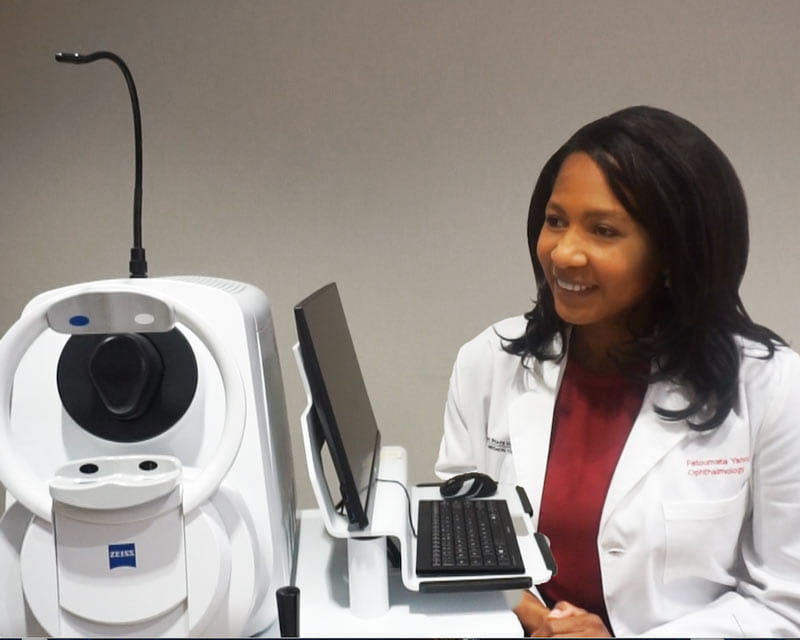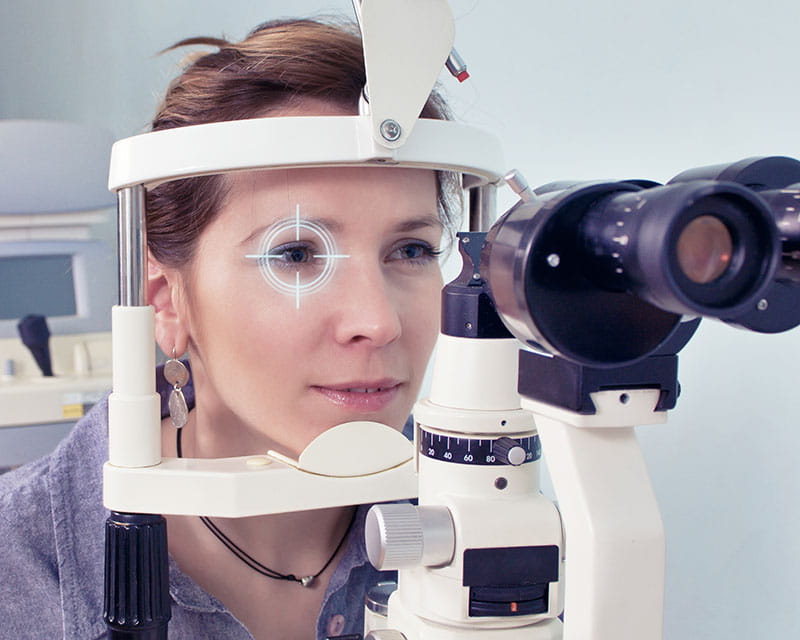
Swept-source OCT angiography reveals exquisite details of ocular structures
 Although medical treatment and surgeries have progressed, approximately 14% of glaucoma patients today still go blind in at least one eye, a percentage that’s barely improved in the last four decades.
Although medical treatment and surgeries have progressed, approximately 14% of glaucoma patients today still go blind in at least one eye, a percentage that’s barely improved in the last four decades.
“Essentially, the percentage of blindness due to glaucoma determined in the 1950s and 60s has not changed with newer glaucoma medications or surgeries,” says Sayoko Moroi, MD, PhD, who will be joining The Ohio State University in January 2020 as the new chair of the Department of Ophthalmology and Visual Science.
The reasons for this lack of progress are complex, Dr. Moroi says, and may be influenced by late diagnoses, access to care, cost of care and lack of education about the importance of treatment.
As she transitions into her new role at Ohio State, Dr. Moroi will be bringing a National Institutes of Health (NIH)-funded grant that she has received to study physiological factors of glaucoma patients and how these factors relate to variations in drug response.
“One of my missions is to prevent glaucoma-related blindness,” Dr. Moroi says. “While we may not cure glaucoma in my lifetime, if we can take small steps toward preventing glaucoma-related blindness, that’s huge progress.”
With the study, Dr. Moroi hopes to dig deep into different factors that may cause eye pressure variation, such as fluid production, fluid drainage and venous pressure in the eye. Glaucoma-related blindness is caused by relatively high eye pressure, causing damage to the optic nerve.
The study will also look at whether these physiological factors account for variations in treatment response to commonly used glaucoma eye drops.
“When we prescribe medical therapy to treat glaucoma, it’s trial-and-error to start typically with a certain drug class. Then patients come back several times to see whether their eye pressure is responding to treatment,” Dr. Moroi says. “Clearly, with this approach, there are some patients who progress to blindness even with new, effective medicines.”
The study, which will take place over two to three months, will involve “considerable investment” from patient volunteers, Dr. Moroi says. Participants will need to use glaucoma eye drops as well as participate in noninvasive tests that measure fluid production and drainage in the eye.
In addition to the NIH-funded study, Dr. Moroi plans to work with Raymond Gao, PhD, to launch a study that examines the genetics of glaucoma and glaucoma risk factors. The research will focus on finding which patients may be more likely to have large pressure fluctuations, or who may be more likely to respond to a certain treatment.
Dr. Moroi hopes the genetics study will help pave the way for precision medicine treatments for glaucoma.
Inspired by her father’s own battle with glaucoma, Dr. Moroi has dedicated much of her career to preventing glaucoma-related blindness.
In addition to this experience, Dr. Moroi also has a passion for pharmacology, which stems from a desire to better understand why there is so much variation in drug response for glaucoma patients, in both therapeutic effects and side effects.
Dr. Moroi comes to Ohio State from the University of Michigan, where she’s the Jerome Jacobson Professor of Ophthalmology and Visual Sciences, chief of the Division of Glaucoma and director of the Glaucoma Fellowship.